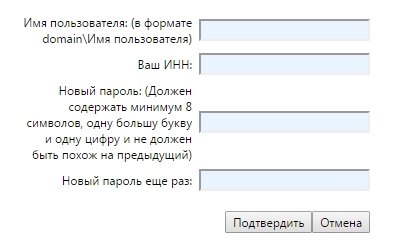Answer the question
In order to leave comments, you need to log in
How to check an attribute in Active Directory using c#?
Good afternoon!
Explain in which direction to dig, please.
I have a password reset form 
where the data is filled in: username and TIN (TIN is written for each user in the employeeID attribute in AD). I want a check to be performed, if the username and TIN match, the password has changed
<tr>
<td>
<table width="350" border="0" cellpadding="0" cellspacing="0">
<tr>
<td width="180" align="right"><%=L_INN%></td>
<td width="7"></td>
<td align="right">
<input id="INN" name="INN" type="text" class="textInputField" runat="server" size="25" autocomplete="off" />
</td>
</tr>
</table>
</td>
</tr>Answer the question
In order to leave comments, you need to log in
Here I have a user search in AD by name. You can create a filter in Active Directory Users & Computers.
SearchResultCollection adSearchResult;
using (DirectoryEntry de = new DirectoryEntry("LDAP://esrr.oao.rzd"))
{
using (DirectorySearcher adSearch = new DirectorySearcher(de))
{
adSearch.Filter = $"(&(objectCategory=person)(objectClass=user)(name={searchString}*)(objectCategory=person)(objectClass=user)(!userAccountControl:1.2.840.113556.1.4.803:=2))";
//adSearch.PropertiesToLoad.Add("displayName");
adSearchResult = adSearch.FindAll();
}
}public void ResetPassword(string userDn, string password)
{
DirectoryEntry uEntry = new DirectoryEntry(userDn);
uEntry.Invoke("SetPassword", new object[] { password });
uEntry.Properties["LockOutTime"].Value = 0; //unlock account
uEntry.Close();
}Didn't find what you were looking for?
Ask your questionAsk a Question
731 491 924 answers to any question